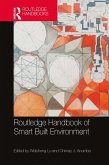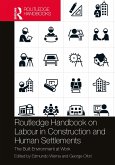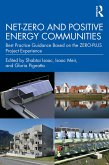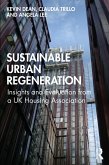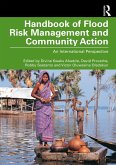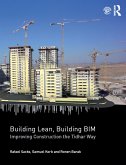Routledge Handbook of Smart Built Environment (eBook, PDF)
Redaktion: Lu, Weisheng; Anumba, Chimay
171,95 €
171,95 €
inkl. MwSt.
Erscheint vor. 20.03.25

86 °P sammeln
171,95 €
Als Download kaufen

171,95 €
inkl. MwSt.
Erscheint vor. 20.03.25

86 °P sammeln
Jetzt verschenken
Alle Infos zum eBook verschenken
171,95 €
inkl. MwSt.
Erscheint vor. 20.03.25
Alle Infos zum eBook verschenken

86 °P sammeln
Unser Service für Vorbesteller - Ihr Vorteil ohne Risiko:
Sollten wir den Preis dieses Artikels vor dem Erscheinungsdatum senken, werden wir Ihnen den Artikel bei der Auslieferung automatisch zum günstigeren Preis berechnen.
Sollten wir den Preis dieses Artikels vor dem Erscheinungsdatum senken, werden wir Ihnen den Artikel bei der Auslieferung automatisch zum günstigeren Preis berechnen.
Routledge Handbook of Smart Built Environment (eBook, PDF)
Redaktion: Lu, Weisheng; Anumba, Chimay
- Format: PDF
- Merkliste
- Auf die Merkliste
- Bewerten Bewerten
- Teilen
- Produkt teilen
- Produkterinnerung
- Produkterinnerung

Bitte loggen Sie sich zunächst in Ihr Kundenkonto ein oder registrieren Sie sich bei
bücher.de, um das eBook-Abo tolino select nutzen zu können.
Hier können Sie sich einloggen
Hier können Sie sich einloggen
Sie sind bereits eingeloggt. Klicken Sie auf 2. tolino select Abo, um fortzufahren.

Bitte loggen Sie sich zunächst in Ihr Kundenkonto ein oder registrieren Sie sich bei bücher.de, um das eBook-Abo tolino select nutzen zu können.
The primary aim of this edited volume is to document the current theories, best practices, and technological advancements in the move towards a Smart Built Environment (SBE).
- Geräte: PC
- mit Kopierschutz
- eBook Hilfe
- Größe: 31.4MB
Andere Kunden interessierten sich auch für
![Routledge Handbook of Smart Built Environment (eBook, ePUB) Routledge Handbook of Smart Built Environment (eBook, ePUB)]() Routledge Handbook of Smart Built Environment (eBook, ePUB)171,95 €
Routledge Handbook of Smart Built Environment (eBook, ePUB)171,95 €![Routledge Handbook on Labour in Construction and Human Settlements (eBook, PDF) Routledge Handbook on Labour in Construction and Human Settlements (eBook, PDF)]() Routledge Handbook on Labour in Construction and Human Settlements (eBook, PDF)187,95 €
Routledge Handbook on Labour in Construction and Human Settlements (eBook, PDF)187,95 €![Net-Zero and Positive Energy Communities (eBook, PDF) Net-Zero and Positive Energy Communities (eBook, PDF)]() Net-Zero and Positive Energy Communities (eBook, PDF)57,95 €
Net-Zero and Positive Energy Communities (eBook, PDF)57,95 €![Sustainable Urban Regeneration (eBook, PDF) Sustainable Urban Regeneration (eBook, PDF)]() Kevin DeanSustainable Urban Regeneration (eBook, PDF)57,95 €
Kevin DeanSustainable Urban Regeneration (eBook, PDF)57,95 €![Handbook of Flood Risk Management and Community Action (eBook, PDF) Handbook of Flood Risk Management and Community Action (eBook, PDF)]() Handbook of Flood Risk Management and Community Action (eBook, PDF)166,95 €
Handbook of Flood Risk Management and Community Action (eBook, PDF)166,95 €![Building Lean, Building BIM (eBook, PDF) Building Lean, Building BIM (eBook, PDF)]() Rafael SacksBuilding Lean, Building BIM (eBook, PDF)67,95 €
Rafael SacksBuilding Lean, Building BIM (eBook, PDF)67,95 €![Routledge Handbook of Sustainable and Resilient Infrastructure (eBook, PDF) Routledge Handbook of Sustainable and Resilient Infrastructure (eBook, PDF)]() Routledge Handbook of Sustainable and Resilient Infrastructure (eBook, PDF)45,95 €
Routledge Handbook of Sustainable and Resilient Infrastructure (eBook, PDF)45,95 €-
-
-
The primary aim of this edited volume is to document the current theories, best practices, and technological advancements in the move towards a Smart Built Environment (SBE).
Dieser Download kann aus rechtlichen Gründen nur mit Rechnungsadresse in A, B, BG, CY, CZ, D, DK, EW, E, FIN, F, GR, HR, H, IRL, I, LT, L, LR, M, NL, PL, P, R, S, SLO, SK ausgeliefert werden.
Produktdetails
- Produktdetails
- Verlag: Taylor & Francis eBooks
- Seitenzahl: 316
- Erscheinungstermin: 20. März 2025
- Englisch
- ISBN-13: 9781040322512
- Artikelnr.: 73214650
- Verlag: Taylor & Francis eBooks
- Seitenzahl: 316
- Erscheinungstermin: 20. März 2025
- Englisch
- ISBN-13: 9781040322512
- Artikelnr.: 73214650
- Herstellerkennzeichnung Die Herstellerinformationen sind derzeit nicht verfügbar.
Professor Weisheng (Wilson) Lu is Chair Professor (Digital Construction) and Head of Department of Real Estate and Construction, Faculty of Architecture at The University of Hong Kong. Professor Chimay J. Anumba is Dean of the College of Design, Construction and Planning at the University of Florida, USA.
Foreword by Faye Bowser
Introduction
Chapter 1: Digital twins for smart decision making
Chapter 2: From particles to spaces: The intelligent planning unit (IPU)
theory to simplify the built environment
Chapter 3: Generative design for excellence (DfX) for a smart built
environment: From rule-based imitation to data-driven exploration
Chapter 4: Project Delivery Methods to Digital Fabrication in Architecture:
A Comparative Case Study from a Modularity Perspective
Chapter 5: Unlocking the power of language models for smart configuration
in the AEC domain using spoken language understanding
Chapter 6: Physical fatigue assessment (PFA) for construction workers with
AI and sensory techniques
Chapter 7: Smart or not? Perspectives on digital fabrication and digital
construction
Chapter 8: Methodical review of exoskeleton use in the construction
industry
Chapter 9: Ontological Models for Construction Scheduling and Resource
Planning
Chapter 11: A Theoretical Framework for Integrating Digital Twins in
Building Lifecycle Management
Chapter 12: Digital Twin-Based Prototype System for Healthcare Facilities
Management
Chapter 13: Activity-Based Models for Smart and Sustainable Urban
Environment
Chapter 14: Sustainable Urban Built Environment: Principles, Tools, and
Applications
Chapter 15: Exploring the Potentials and Obstacles of City Information
Modelling
Chapter 16: Mobility-as-a-Service (MaaS) and the Built Environment
Chapter 17: Integrated Smart Curb Management in Urban Built Environments
Addressing Human Dynamics and Disruptive Technologies
Chapter 18¿Digital technologies for climate-adaptive smart urban
transportation systems
Chapter 19: Blockchain for Smart Built Environment: Current Status,
Challenges, and Prospects
Chapter 20: Effects of Signage Color on Human Psychophysiological States
and Wayfinding Performance in Urban Underground Spaces with Different Noise
Levels: A Combined EEG and VR Experiment
Conclusion
Introduction
Chapter 1: Digital twins for smart decision making
Chapter 2: From particles to spaces: The intelligent planning unit (IPU)
theory to simplify the built environment
Chapter 3: Generative design for excellence (DfX) for a smart built
environment: From rule-based imitation to data-driven exploration
Chapter 4: Project Delivery Methods to Digital Fabrication in Architecture:
A Comparative Case Study from a Modularity Perspective
Chapter 5: Unlocking the power of language models for smart configuration
in the AEC domain using spoken language understanding
Chapter 6: Physical fatigue assessment (PFA) for construction workers with
AI and sensory techniques
Chapter 7: Smart or not? Perspectives on digital fabrication and digital
construction
Chapter 8: Methodical review of exoskeleton use in the construction
industry
Chapter 9: Ontological Models for Construction Scheduling and Resource
Planning
Chapter 11: A Theoretical Framework for Integrating Digital Twins in
Building Lifecycle Management
Chapter 12: Digital Twin-Based Prototype System for Healthcare Facilities
Management
Chapter 13: Activity-Based Models for Smart and Sustainable Urban
Environment
Chapter 14: Sustainable Urban Built Environment: Principles, Tools, and
Applications
Chapter 15: Exploring the Potentials and Obstacles of City Information
Modelling
Chapter 16: Mobility-as-a-Service (MaaS) and the Built Environment
Chapter 17: Integrated Smart Curb Management in Urban Built Environments
Addressing Human Dynamics and Disruptive Technologies
Chapter 18¿Digital technologies for climate-adaptive smart urban
transportation systems
Chapter 19: Blockchain for Smart Built Environment: Current Status,
Challenges, and Prospects
Chapter 20: Effects of Signage Color on Human Psychophysiological States
and Wayfinding Performance in Urban Underground Spaces with Different Noise
Levels: A Combined EEG and VR Experiment
Conclusion
Foreword by Faye Bowser
Introduction
Chapter 1: Digital twins for smart decision making
Chapter 2: From particles to spaces: The intelligent planning unit (IPU)
theory to simplify the built environment
Chapter 3: Generative design for excellence (DfX) for a smart built
environment: From rule-based imitation to data-driven exploration
Chapter 4: Project Delivery Methods to Digital Fabrication in Architecture:
A Comparative Case Study from a Modularity Perspective
Chapter 5: Unlocking the power of language models for smart configuration
in the AEC domain using spoken language understanding
Chapter 6: Physical fatigue assessment (PFA) for construction workers with
AI and sensory techniques
Chapter 7: Smart or not? Perspectives on digital fabrication and digital
construction
Chapter 8: Methodical review of exoskeleton use in the construction
industry
Chapter 9: Ontological Models for Construction Scheduling and Resource
Planning
Chapter 11: A Theoretical Framework for Integrating Digital Twins in
Building Lifecycle Management
Chapter 12: Digital Twin-Based Prototype System for Healthcare Facilities
Management
Chapter 13: Activity-Based Models for Smart and Sustainable Urban
Environment
Chapter 14: Sustainable Urban Built Environment: Principles, Tools, and
Applications
Chapter 15: Exploring the Potentials and Obstacles of City Information
Modelling
Chapter 16: Mobility-as-a-Service (MaaS) and the Built Environment
Chapter 17: Integrated Smart Curb Management in Urban Built Environments
Addressing Human Dynamics and Disruptive Technologies
Chapter 18¿Digital technologies for climate-adaptive smart urban
transportation systems
Chapter 19: Blockchain for Smart Built Environment: Current Status,
Challenges, and Prospects
Chapter 20: Effects of Signage Color on Human Psychophysiological States
and Wayfinding Performance in Urban Underground Spaces with Different Noise
Levels: A Combined EEG and VR Experiment
Conclusion
Introduction
Chapter 1: Digital twins for smart decision making
Chapter 2: From particles to spaces: The intelligent planning unit (IPU)
theory to simplify the built environment
Chapter 3: Generative design for excellence (DfX) for a smart built
environment: From rule-based imitation to data-driven exploration
Chapter 4: Project Delivery Methods to Digital Fabrication in Architecture:
A Comparative Case Study from a Modularity Perspective
Chapter 5: Unlocking the power of language models for smart configuration
in the AEC domain using spoken language understanding
Chapter 6: Physical fatigue assessment (PFA) for construction workers with
AI and sensory techniques
Chapter 7: Smart or not? Perspectives on digital fabrication and digital
construction
Chapter 8: Methodical review of exoskeleton use in the construction
industry
Chapter 9: Ontological Models for Construction Scheduling and Resource
Planning
Chapter 11: A Theoretical Framework for Integrating Digital Twins in
Building Lifecycle Management
Chapter 12: Digital Twin-Based Prototype System for Healthcare Facilities
Management
Chapter 13: Activity-Based Models for Smart and Sustainable Urban
Environment
Chapter 14: Sustainable Urban Built Environment: Principles, Tools, and
Applications
Chapter 15: Exploring the Potentials and Obstacles of City Information
Modelling
Chapter 16: Mobility-as-a-Service (MaaS) and the Built Environment
Chapter 17: Integrated Smart Curb Management in Urban Built Environments
Addressing Human Dynamics and Disruptive Technologies
Chapter 18¿Digital technologies for climate-adaptive smart urban
transportation systems
Chapter 19: Blockchain for Smart Built Environment: Current Status,
Challenges, and Prospects
Chapter 20: Effects of Signage Color on Human Psychophysiological States
and Wayfinding Performance in Urban Underground Spaces with Different Noise
Levels: A Combined EEG and VR Experiment
Conclusion

